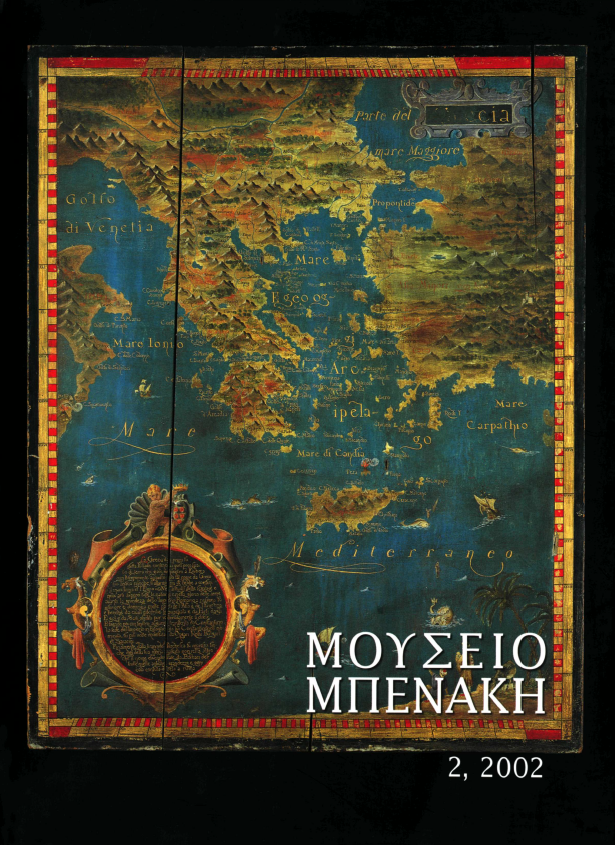A neolithic marble idol pendant from the Péloponnèse. New conclusions on an ancient find
Abstract
This marble idol in the form of a naked female (inv. no. 31350) was donated to the Benaki Museum in 1991 by Elisabeth French in memory of her father, Alan J. B. Wace, one of the most distinguished archaeologists of the last century. It came to her as part of her father's legacy, as it had been bought by Wace shortly before 1949, the year when it was published by him. On the basis of information available at the time, Wace declared it to be a product of mainland Greece and dated it to the beginning of the Early Bronze Age (end of the 4th millennium BC). The small idol represents a seated female figure with her hands clasped just below her breast. The legs, separated by a deep groove, would have displayed their now lost calves bent at the knees, the right one vertically and the left behind it sideways. It belongs to the category of naturalistic neolithic idols, in spite of the near-schematic treatment of the head and the clearly summary rendering of secondary features. The Benaki Museum figure displays obvious similarities with marble and stone female idols and idol pendants from inland Laconia, Messenia and Argolis, mainly in the treatment of the lower body and the sharply pointed head, which suggests that it belongs to the same type and possibly originates in the same areas. The proposed dating of the Peloponnesian findings to the Middle or Late Neolithic period (5.800-4.500 BC) -since most of them are either accidental finds or located in various later contexts— implies a rather earlier date than the published one. Apart from that, however, its main interest lies in its use as an amulet. Of great significance is the fact that two of the typologically related examples, one from Messenia and the other from Argolis, where also used as amulets. Human-shaped Neolithic amulets form a distinct category of ornament, and those which render their models naturalistically and not schematically form a small group, the greater part of which originates in Thessaly and the Péloponnèse. The materials used in the manufacture of the human-shaped amulets are normally stones in a variety of colours, and less often clay, while oystershell and bone were chosen by craftsmen exceptionally rarely, in spite of the softness and consequent malleability of this material. Prehistoric ornaments representing the human body or limbs, with their obvious prophylactic / apotropaic character which has its origins in the world of magical symbolism, were perhaps vehicles for supernatural powers which might prevail against the laws of nature, while at the same time they contain information of a social and ideological character that makes them recognizable codewords among members of the community.
Article Details
- How to Cite
-
Παπαγεωργίου Ε. (2018). A neolithic marble idol pendant from the Péloponnèse. New conclusions on an ancient find. Mouseio Benaki Journal, 2, 9–18. https://doi.org/10.12681/benaki.18184
- Issue
- Vol. 2 (2002)
- Section
- Articles

This work is licensed under a Creative Commons Attribution-NonCommercial-ShareAlike 4.0 International License.
The copyright for articles published in Mouseio Benaki is retained by the author(s), with first publication rights granted to the journal. By virtue of their appearance in this open access journal, articles may be used freely for non-commercial uses, with the exception of the non-granted right to make derivative works, with proper reference to the author(s) and its first publication. The Benaki Museum retains the right to publish, reproduce, publicly display, distribute, and use articles published in Mouseio Benaki in any and all formats and media, either separately or as part of collective works, worldwide and for the full term of copyright. This includes, but is not limited to, the right to publish articles in an issue of Mouseio Benaki, copy and distribute individual reprints of the articles, authorize reproduction of articles in their entirety in another publication of the Benaki Museum, as well as authorize reproduction and distribution of articles or abstracts thereof by means of computerized retrieval systems.


